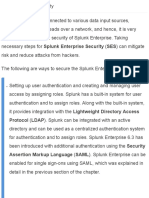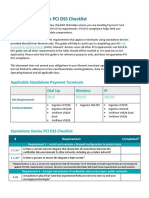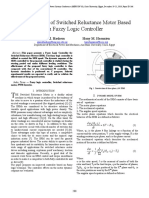67% found this document useful (3 votes)
6K views9 pagesSplunk CLI Useful Commands Cheatsheet
hjgfjkhgfjkhgf
Uploaded by
SetuCopyright
© © All Rights Reserved
We take content rights seriously. If you suspect this is your content, claim it here.
Available Formats
Download as PDF, TXT or read online on Scribd
67% found this document useful (3 votes)
6K views9 pagesSplunk CLI Useful Commands Cheatsheet
hjgfjkhgfjkhgf
Uploaded by
SetuCopyright
© © All Rights Reserved
We take content rights seriously. If you suspect this is your content, claim it here.
Available Formats
Download as PDF, TXT or read online on Scribd
/ 9

























































































